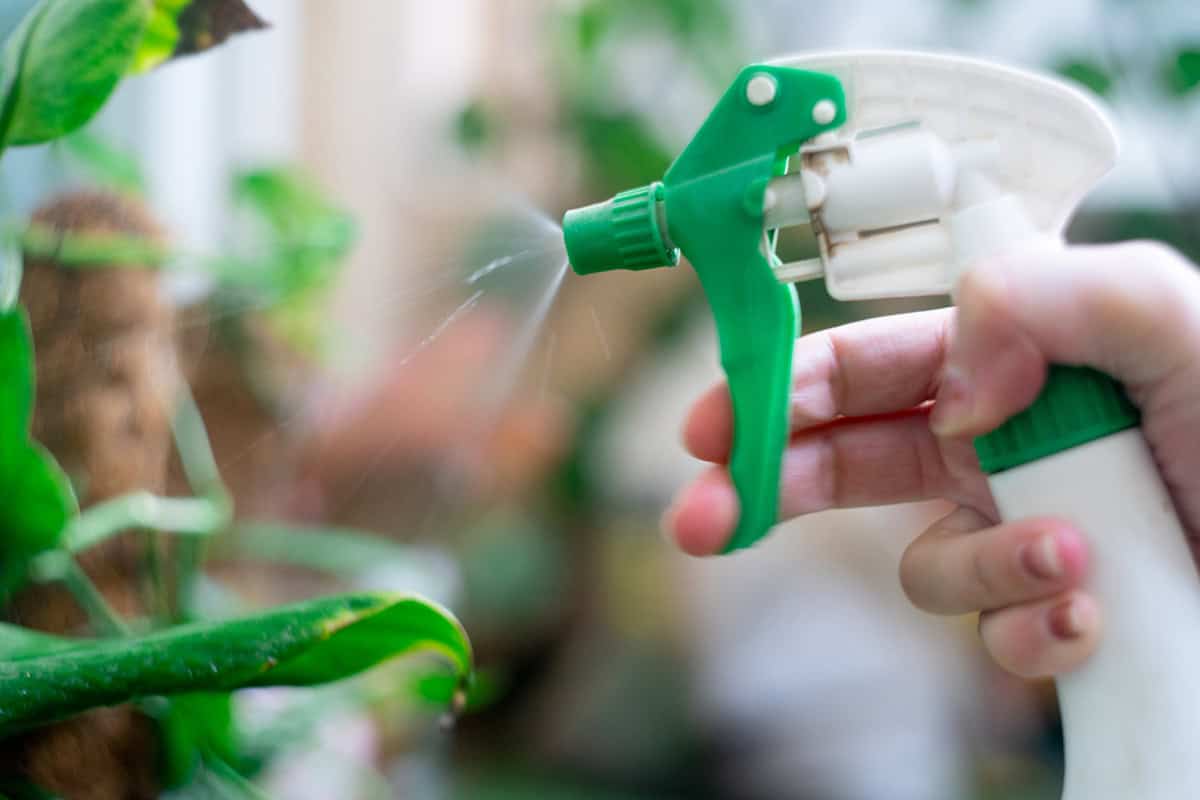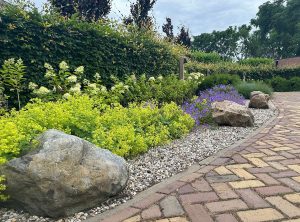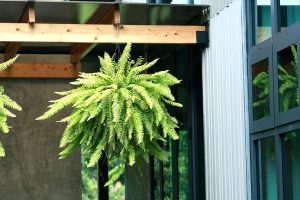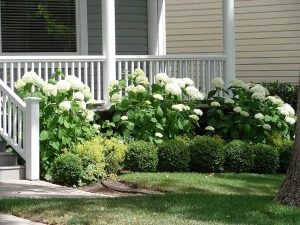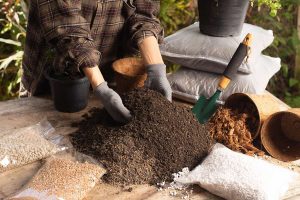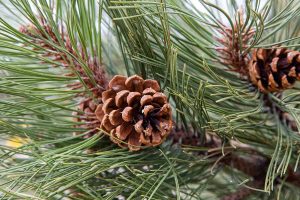If you notice your favorite houseplants struggling with pests and seek an effective, natural solution, neem oil could be the answer you need. Learn how to use neem oil to protect your plants from pests and diseases and keep them healthy and vibrant.
Table of Contents
Benefits of Using Neem Oil for Plants
Neem oil is a natural product derived from the seeds of the neem tree (Azadirachta indica). Its properties make it an excellent choice for protecting your plants from pests and diseases. In the first paragraph, you’ll learn about its insecticidal properties.
The main insecticidal ingredient in neem oil is azadirachtin. It effectively deters insect feeding and reduces their growth and egg laying. This means that using neem oil helps in controlling various insect pests such as whiteflies, mealybugs, and scale nymphs. As a result, your plants will be free from damage and will grow better.
Another major advantage of using neem oil is its fungicidal activity. Some unidentified compounds in neem oil possess fungicidal properties that help prevent plant diseases. Applying neem oil can effectively protect your plants from a variety of fungal infections that can otherwise impact their yield and overall health.
Apart from its insecticidal and fungicidal benefits, neem oil is also a natural pesticide with minimal impact on the environment. Unlike some chemical pesticides, using neem oil has a lower risk of causing harm to beneficial insects and pollinators. This means you can protect your plants without negatively impacting the surrounding ecosystem.
Lastly, neem oil is an integral part of Integrated Pest Management (IPM) practices. Its properties complement other IPM methods, ensuring a healthy and thriving garden. By using neem oil, you’re contributing to a sustainable and eco-friendly approach to gardening.
Understanding Neem Oil
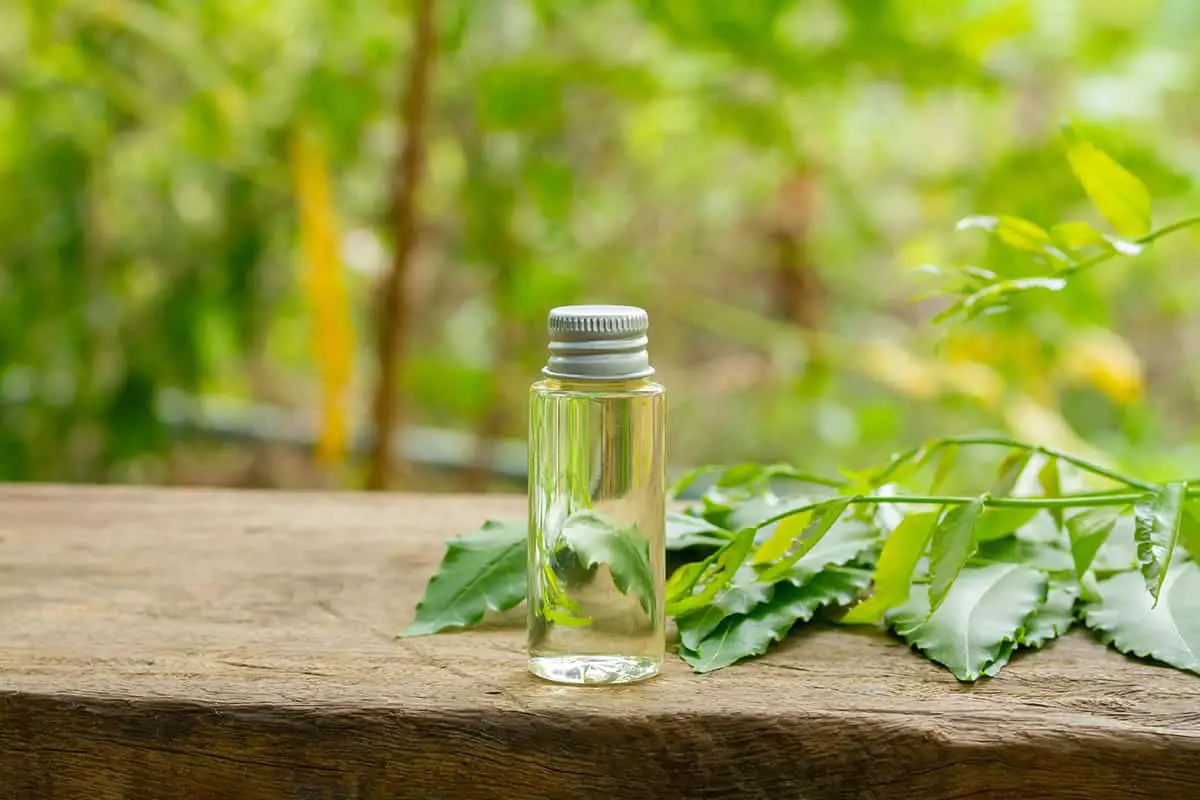
Composition of Neem Oil
Neem oil comes from the seeds of the neem tree (Azadirachta indica), native to India. Its main insecticidal component is azadirachtin, but it also contains many other components with pesticidal properties. It’s a natural and safe alternative to synthetic pesticides for gardeners and farmers.
How Neem Oil Works Against Pests
Neem oil works by targeting pest insects in multiple ways. Firstly, it acts as a feeding deterrent for insects, reducing the damage they can cause to your plants. Furthermore, it inhibits their growth and reproduction, ensuring that the pest population remains under control. Studies have shown that neem oil also works as a repellent, driving insects away from treated plants.
Another way neem oil helps protect your plants is by managing fungal diseases, such as powdery mildew. While it can’t cure plants already infected, it can prevent the spread of the disease to healthy tissue.
To ensure the effective use of neem oil, make sure to apply it thoroughly, covering all surfaces of your plants. Also, it is essential to apply when pests are in their early stages of growth, as the oil tends to be more effective on younger insects.
When using neem oil, you’re not only benefitting from its pest control properties, but you’re also utilizing a natural and environmentally friendly method in maintaining the health of your plants.
Preparation of Neem Oil Mixture
Essential Supplies
Before starting, ensure you have all the necessary supplies on hand. You will need neem oil, a clean spray bottle, water, and a liquid soap or emulsifier that is safe for plants. It’s important to use good quality products to get the most effective results.
Mixing Instructions
First, measure the appropriate amount of neem oil based on the size of your spray bottle. It is recommended to use a 1-2% neem oil concentration for general plant care; for example, use 1-2 ml of neem oil per 100 ml of water. Next, pour some water into the spray bottle, but do not fill it yet.
To help the neem oil mix well with water, add a few drops of liquid soap or emulsifier. Shake the mixture gently to blend the ingredients. Now, slowly pour the remainder of the water into the spray bottle, leaving a little space at the top. Secure the spray nozzle, and give the bottle a good shake to ensure the oil and water are thoroughly mixed.
Your neem oil spray is now ready for use. Apply it to the affected plants, ensuring that you cover all areas, including the undersides of leaves, where pests and diseases often hide.
Application Guidelines
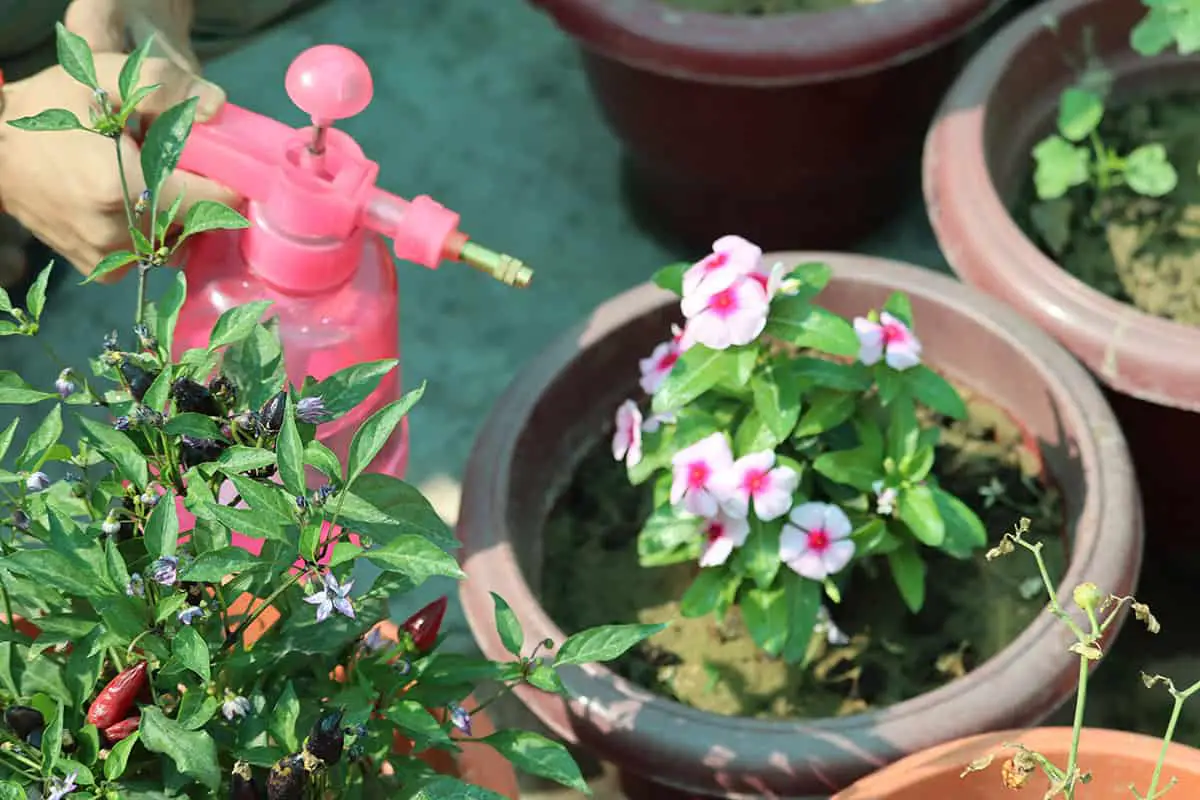
Best Time to Apply
When using neem oil on your plants, it’s essential to apply it at the right time. Neem oil works best when temperatures are between 60 and 80 degrees Fahrenheit. This way, you ensure it doesn’t evaporate too quickly and has a chance to work effectively. Typically, early morning or late evening is the best time to apply neem oil because temperatures are cooler, and direct sunlight is minimal.
Frequency of Application
The frequency of neem oil applications will depend on the severity of the problem and the specific pests or diseases you need to address. In general, it’s a good idea to start with a single application and then monitor your plants for any improvements. If the issue persists, you can apply neem oil every 7 to 14 days until the problem is under control. Remember that it’s important to follow the product’s label instructions and not to overuse it, as excessive applications might harm your plants.
Method of Application
To apply neem oil, you will need to mix it with water and an emulsifier, as horticultural oils are highly refined petroleum products that need to be homogenized and ready to use. Follow the instructions on the label and create a solution with the appropriate concentration. You can then apply it with a spray bottle or garden sprayer, ensuring you cover all affected parts of your plants.
When applying the solution, make sure to coat both the top and bottom sides of the leaves, as well as any flowers, buds, or stems that may be affected by pests or diseases. It’s advised to wear protective clothing, such as gloves and goggles while handling neem oil to protect yourself from potential skin irritation. Lastly, always test a small area of your plants first to ensure that there is no adverse reaction or phytotoxicity before applying it to the entire population.
Safety Measures and Considerations
Protecting Beneficial Insects
Neem oil is an effective natural pesticide. However, when you apply it to your plants, keep in mind that it can also affect beneficial insects like ladybugs and bees.
To minimize the impact on these helpful creatures, apply the neem oil treatment in the early morning or evening when they are least active. Be sure to target only the infested areas of the plant, avoiding healthy foliage where beneficial insects may reside. This way, you can protect pollinators and other insects that aid in your garden’s growth.
Neem Oil and Plant Sensitivity
Although neem oil is considered a safe natural pesticide, some plants may be sensitive to it. To prevent any damage, it is crucial to perform a patch test before applying neem oil to the entire plant. Dilute the neem oil with plenty of water and apply it to a small section of the plant first.
Observe the test area for a day or two to ensure there aren’t any adverse effects, such as wilting or leaf yellowing. After confirming there are no negative reactions, you can proceed to treat the rest of the plant.
Storage and Disposal of Neem Oil
Proper storage and disposal of neem oil are essential for maintaining its efficacy and ensuring the safety of the environment. Neem oil should be stored in a cool, dark place, away from heat and direct sunlight.
This fact sheet suggests storing neem oil in its original container, but if you have to use a secondary container, use one made from an appropriate material that won’t degrade or react with the oil. When it comes to disposal, don’t pour unused neem oil down the drain or into the water system. Instead, check with your local waste management facility for proper disposal guidelines.
When Not to Use Neem Oil
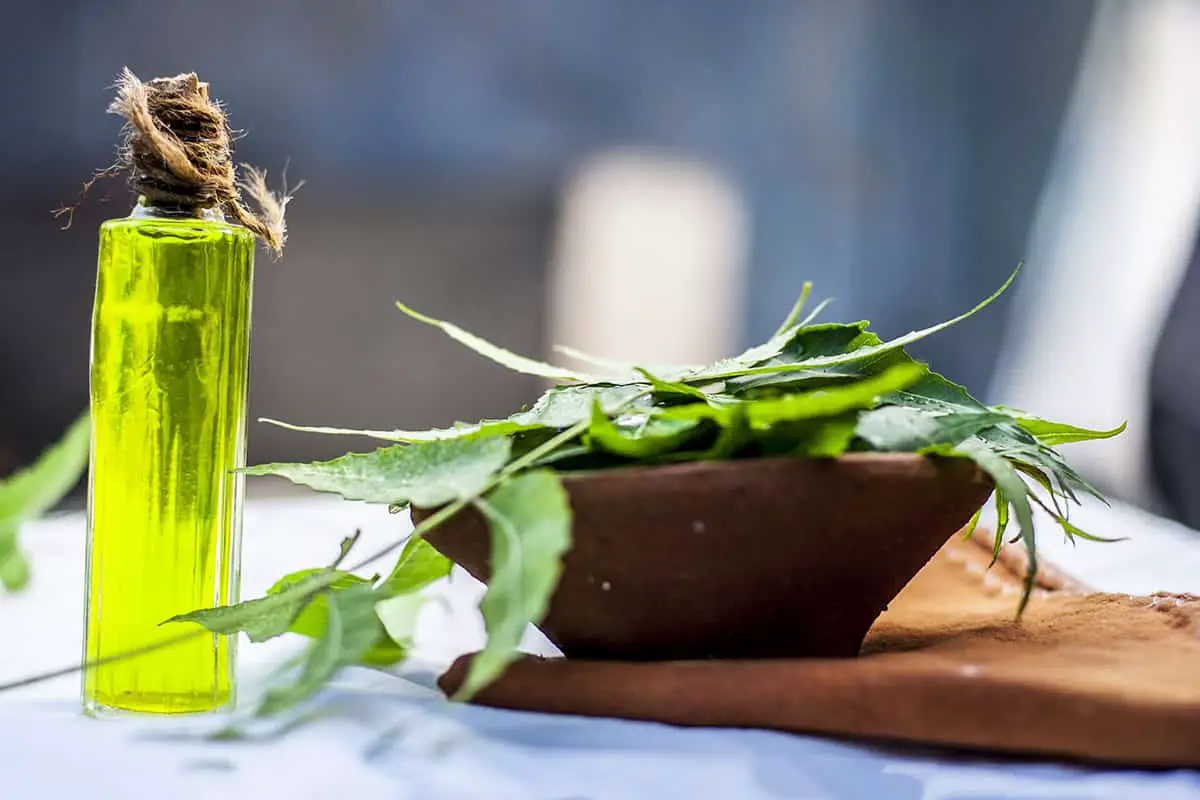
Neem oil can be beneficial for your plants, but there are situations when it is not advisable to use it.
High temperatures can reduce neem oil’s effectiveness. Thus, avoid applying it during the scorching midday sun. Instead, opt for early morning or late evening applications when temperatures are cooler.
You should also be attentive to your plants’ sensitivity to neem oil. Some plants may experience damage, especially if they are young or delicate. Prior to a full treatment, test neem oil on a small portion of the plant and observe the results for 24 hours. If there’s no adverse reaction, it is safe to proceed with the full application.
Be aware that neem oil is known to have a bitter taste and garlic/sulfur smell. If you plan to harvest your edible plants soon, you might want to delay neem oil application to avoid any unpleasant taste or aroma in your produce.
Lastly, keep in mind that neem oil’s efficacy can be lessened against some diseases like black spot and certain leaf spots. In such cases, alternative treatments should be considered to address these specific issues.
Troubleshooting Common Issues
Dealing with Resistant Pests
Sometimes, certain pests might be resistant to neem oil. To tackle this issue, try combining neem oil with other natural pest control strategies like horticultural oil or spinosad.
Always follow the instructions on the product labels, as mixing horticultural oil and neem oil can cause plant damage if not done correctly. Additionally, it’s essential to rotate your pest management products to avoid resistance buildup in the long run.
Addressing Neem Oil Overuse
Applying too much neem oil to your plants can lead to several problems. Excessive use may cause leaf burn, harm beneficial insects, or even render the treatment ineffective against targeted pests. To prevent these issues, always stick to the recommended dosage and application frequency found on the neem oil product label.
Also, scout for potential side effects a few days after neem oil application. This will help you spot early signs of plant stress. In case of any negative effects, reduce the neem oil concentration in future applications or opt for alternative pest control methods.
Lastly, always be cautious when applying neem oil on sensitive plants. For instance, some species might be more vulnerable to oil-based sprays. To avoid harming your plants, test the neem oil on a small portion before applying it to the entire plant.
